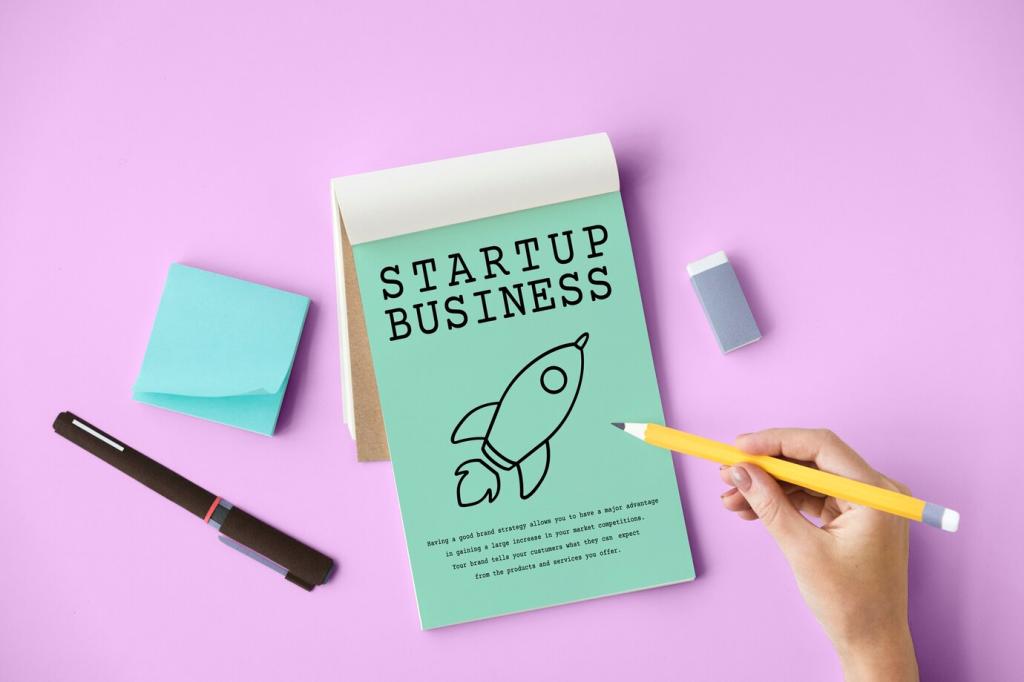Chosen theme: Scaling Your Startup: Growth Strategies. Welcome, founders and builders. Today we explore the practical moves that turn scrappy traction into durable scale, with real stories, crisp frameworks, and prompts to share your lessons and subscribe for more growth insights.
From Product-Market Fit to Repeatable Growth
Do not confuse a few loud customers with market pull. Look for retention curves flattening above target, rising NPS, organic referral behaviors, and inbound momentum that persists even when you pause campaigns or reduce founder-led selling.
Map how each new user or customer drives the next. Viral invites, marketplace liquidity, content flywheels, or partner ecosystems can compound. Start small, instrument the loop, and iterate until the loop’s efficiency predictably beats your marginal acquisition cost.
Aisha’s B2B SaaS stalled at 1,000 seats until she added usage-based prompts that nudged admins to invite teammates. Activation rose 18 percent, expansion climbed, and referrals doubled. Tell us your inflection point and subscribe for the full breakdown.
Turn recurring tasks into simple checklists, then automate the steps that cause delays or errors. Start with onboarding, billing, and support triage. Clear owners, SLAs, and tooling prevent scale from magnifying small, costly mistakes across the organization.
Building Scalable Systems and Processes
Tie objectives to outcomes customers feel, not output. Quarterly OKRs, monthly reviews, and weekly metrics syncs keep teams aligned. Kill zombie projects early and publicly. Invite your team to comment and subscribe to receive our reusable OKR templates.
Building Scalable Systems and Processes
Customer Acquisition at Scale
Prove a channel works in miniature before you pour fuel on it. Paid search, outbound, content, partnerships, or product-led motion each favor different ICPs and cycles. Commit to clear hypotheses, rapid tests, and brutally honest kill criteria for unproductive channels.

Customer Acquisition at Scale
Instrument CAC by cohort, track LTV with gross margin and churn, and watch payback periods like a hawk. Healthy scale often targets sub-12-month payback. Share your numbers anonymously in the comments to benchmark, and subscribe for our cohort modeling sheet.
Hiring for Velocity Without Breaking Culture
Scorecards Beat Vibes
Define must-have competencies, expected outcomes, and anti-goals before interviews. Structured loops reduce bias and increase signal. Ask candidates to walk through past scaling decisions, tradeoffs, and postmortems to test judgment under real growth constraints.
Onboarding at Warp Speed
Day-one environment access, a 30-60-90 plan, and a starter project create momentum. Pair every new hire with a culture buddy and a domain mentor. We saw ramp time drop 40 percent when teams shipped a small improvement in week one.
Culture as an Operating System
Write the behaviors you reward and the ones you reject. Celebrate learning velocity, crisp writing, and ownership. Share your favorite cultural principle in the comments, and subscribe for our culture memo template used by three unicorn-stage teams.
Funding, Runway, and Strategic Bets
Operate like you are bootstrapped even when you raise. Keep a ruthless focus on gross margin, burn multiple, and cash conversion. Ambition without efficiency rarely survives market shifts or tougher fundraising climates during uncertain macro cycles.
Instrumentation, Metrics, and Decision Rhythm
Pick a metric tightly linked to customer value, not vanity. For product-led startups, it might be weekly active teams performing a core action. Revisit quarterly to ensure it remains predictive as your product and market evolve.

Scaling Technology and Architecture

Evolving from Monolith to Modular
Do not rewrite everything at once. Carve out boundaries, extract services where autonomy and scaling pressures are highest, and keep contracts stable. A pragmatic strangler approach preserves momentum while removing hotspots that block throughput during growth.

Performance Budgets and SLOs
Define budgets for latency, payload size, and build times. Set service level objectives with user-facing language and track them in dashboards. When you miss, treat it as a product incident because customers experience performance as a core feature every day.

Share Your Scaling War Stories
What architecture decision saved you months later? Which one hurt? Tell us in the comments so others can learn faster. Subscribe and we will feature selected lessons in our upcoming deep-dive on reliable, evolvable systems for high-growth teams.
